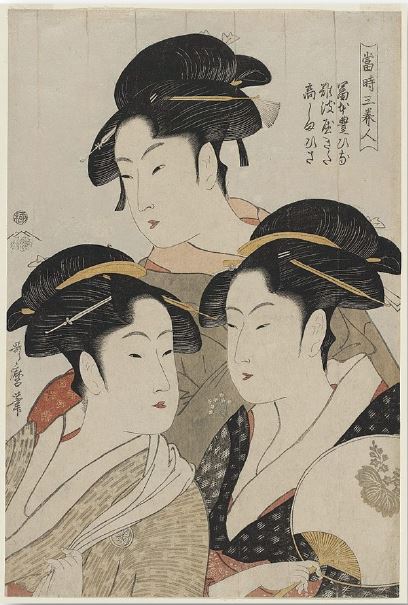The Japanese ‘Floating World’ of the Edo Period
Keith’s presentation was a fascinating exposition of how artists recorded every aspect of the ‘Floating World’ of the Edo Period in Japan (1615- 1868).
Japan was going through a relatively calm period in its history. What was a warrior to do with his time to remove pent up emotions and aggression? Well why not visit Yoshiwara of course.
The ‘floating world’ or ukiyo was a world of fashionable, extravagant, artistic and sexual pleasures. Ukiyo could be found in Yoshiwara (‘the nightless city’) which was a walled area in the city of Edo (present day Tokyo). Within the Yoshiwara’s walls were teahouses, shops, and more than a hundred brothels arranged in a rectangular grid, divided from end to end by a main street, Nakanocho.
Within the extremely stratified Japanese society in Edo, Yoshiwara flourished and all society and culture of ukiyo was recorded by the artists of the day.
Keith presented us with images of simply stunning paintings, prints and woodcuts by artists such as Utamaro Kitegawa (1754 – 1806) who recorded every aspect of life in Yoshiwara.
The presentation was a delightful escape into a vastly different world. We were presented with the way in which the beauty of the Geisha and Courtesan was represented within their daily tasks. The ‘spring’ images (another name given to more erotic representations) added to the mix. I particularly loved the representation of nature: moon, flowers, snow, and the meaning behind the patterns on the beautiful clothing of the Courtesan.
I am sure that I will not be the only one tempted to look further into this captivating subject.
Please find set out below a link to Keith’s presentation.
pictures of the floating world
